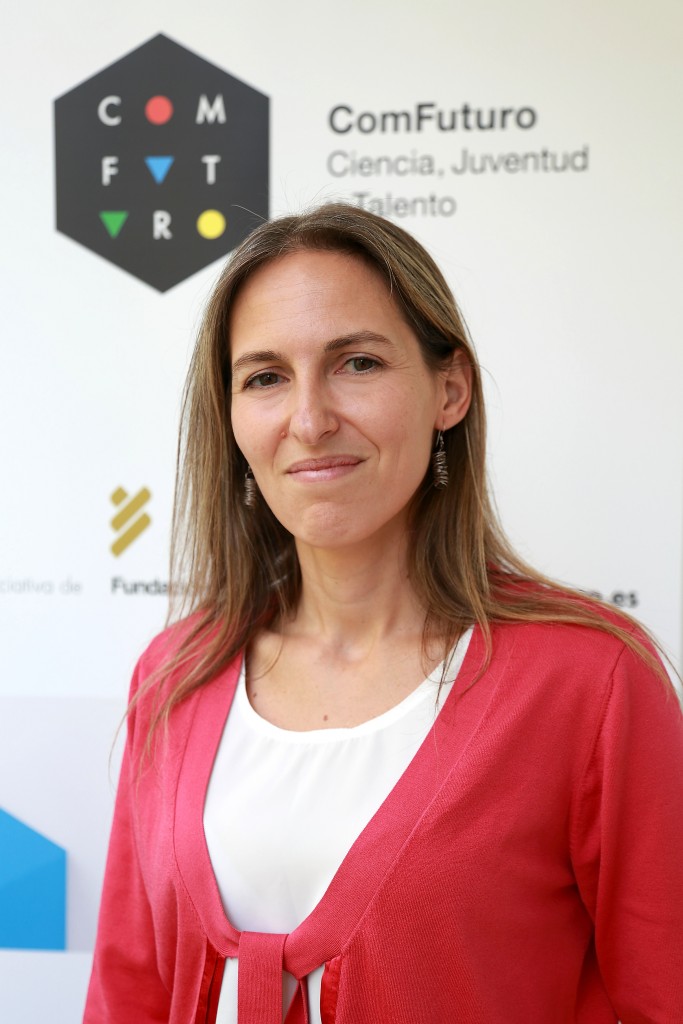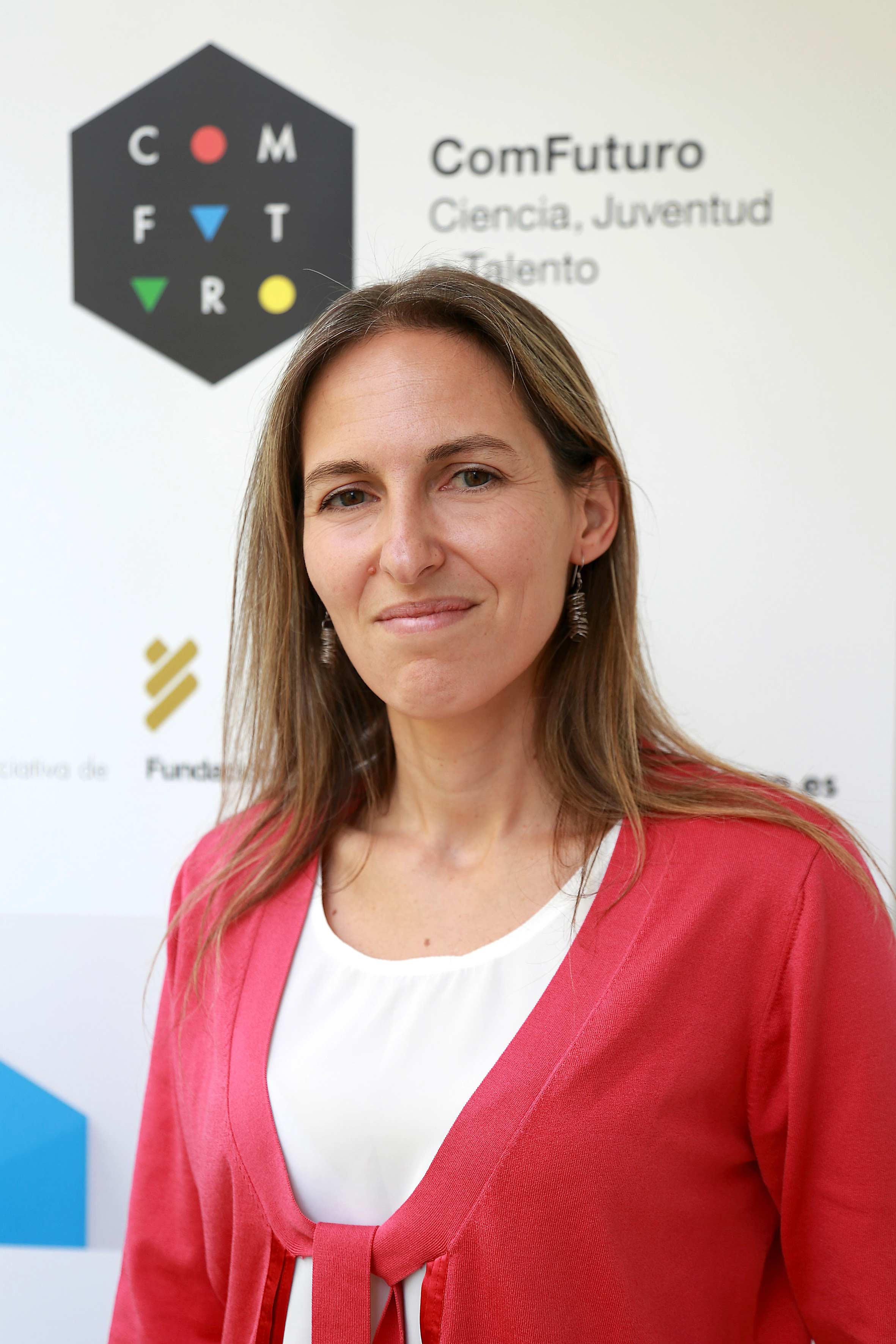
Aitana Tamayo Hernando holds a degree in Chemistry from the Complutense University of Madrid. Her research has been mainly focused on the field of porous ceramic materials for high-temperature applications. Linked to the Institute of Ceramics and Glass since 2004, and after the defence of her doctoral thesis, she spent three years developing her research in the most internationally recognised laboratories in the field of ceramics and glass, both in the U.S. and in Germany.
She received a JAE-doc grant from CSIC in 2012 to develop new porous ceramic materials for use in high-temperature solar concentrators. Since then, her research has been strongly linked to the development of materials for clean energy and fuels. Her research is visible in more than thirty publications included in the Science Citation Index, most of them in high-impact journals in the field of ceramic materials.
ComFuturo Researcher (I edition) in the line of research of the programme “Low-cost catalytic solutions for the gas industry“. She developed in the Institute of Ceramics and Glass of CSIC her project “Thermocatalytic nanocomposites for the generation of clean fuels with solar energy“.
Project Summary
This research project is focused on obtaining thermochemical catalytic supports for syngas generation in solar reactors. Materials will be obtained that allow the thermochemical dissociation of CO2 and water by using concentrated solar energy to provide the heat of reaction. These materials, nanocomposites of nanostructured transition element oxides, carbides, and oxycarbonitrides, must be capable of undergoing a redox reaction at elevated temperature for the two-step production of H2 and CO. The main novelty included in this project is the incorporation of a microporous nanostructured oxycarbonitride phase with high permeability H2. The purpose is to facilitate the separation of the gases generated. This new C-rich phase promotes the carbothermal reduction of metal oxides for further extension of CO gas production.
The heat required to produce the endothermic gas generation reactions is produced by a high potential renewable energy source such as concentrated solar power. This technology allows to reach temperatures above 1000 ºC by concentrating the incident sunlight on an optical collector device and focusing it onto a receiver.
New materials with a high specific surface area will be designed to optimise the extent of the thermochemical reactions from gas generation. The process will start from salts and alkoxides of the transition elements (type Ce, Zr, Zn, etc.) and from the control of the reactions involved in the sol-gel synthesis process and its subsequent ceramisation to obtain the nanocomposites, the porosity, and surface energy will be modified. Careful control of stoichiometry is also of great importance in creating anionic vacancies in the oxides, carbides, and oxycarbonitrides to allow electron diffusion through the material.
Application:
Development of a clean technology for the production of eco-fuels to meet the growing energy demand. It aims to obtain new materials for the sustainable production of synthesis gas using concentrated solar radiation as the only source of energy, while minimising the emission of greenhouse gases and other pollutants.
Scientific production derived from the ComFuturo Project
Scientific articles
- A. Tamayo; F. Rubio; M.A. Mazo; J. Rubio (2018). Further characterization of the surface properties of the SiC particles through complementarity of XPS and IGC-ID techniques. BOLETIN DE LA SOCIEDAD ESPAÑOLA DE CERAMICA Y VIDRIO. DOI: 10.1016/j.bsecv.2018.04.003
- A. Tamayo; MªA. Rodríguez; C. Arroyo; J. Beltran-Heredia; F. Rubio (2018). Dependence of the synthetic strategy on the thermochemical energy storage capability of CuxCo3-xO4 spinels. JOURNAL OF THE EUROPEAN CERAMIC SOCIETY. DOI: 10.1016/j.jeurceramsoc.2017.10.038
- E. Casado; B. García; A. Tamayo (2018). Synthesis and characterization of Sr1-xLaxMnO3/SiOC nanocomposites decorated with 1D nanostructures for high temperature CO2 splitting. CERAMICS INTERNATIONAL. DOI: 10.1016/j.ceramint.2018.07.083
- M. A. Mazo; I. Padilla; A. Tamayo; J.I. Robla; A. López-Delgado; J. Rubio (2018). Evaluation of thermal shock resistance of silicon oxycarbide materials for hightemperature receiver applications. SOLAR ENERGY. DOI: 10.1016/j.solener.2018.07.080
- M.A. Mazo; A. Tamayo; A.C. Caballero, J. Rubio (2017). Electrical and thermal response of silicon oxycarbide materials obtained by spark plasma sintering. JOURNAL OF THE EUROPEAN CERAMIC SOCIETY. DOI: 10.1016/j.jeurceramsoc.2017.01.003
- A. Tamayo; R. Peña-Alonso; M.Alejandra Mazo; F. Rubio; J. Rubio (2016). Combined pyrolysis-ammonolysis treatment to retain C during nitridation of SiBOCN ceramics. JOURNAL OF THE CERAMIC SOCIETY OF JAPAN. DOI: 10.2109/jcersj2.16071
Works presented at conferences
- A. Tamayo; E. Casado; B. García. CO2/H2O thermochemical splitting on porous SiOC/LSMO nanocomposites. 9th International Conference on Advanced Nanomaterials. Oral presentation. Aveiro, Portugal. 19/07/2017-21/07/2017
- A. Tamayo; E. Casado; B. García. Thermochemical behavior of porous SiOC/LSMO nanocomposites with 1D nanostructures for syngas production. 15th Conference and Exhibition of the European Ceramic Society. Oral presentation. Budapest, Hungary. 09/07/2017-13/07/2017
- F. Rubio; M. A. Rodríguez; C. Arroyo; J. Beltran-Heredi;, A. Tamayo. CuxCo3-xO4 spinels as thermochemical energy storage systems for high temperature applications. 15th Conference and Exhibition of the European Ceramic Society. Oral presentation. Budapest, Hungary. 09/07/2017-13/07/2017
- A. Tamayo; E.Casado. Nanocomposites avanzados de matriz vítrea para termocatálisis de CO2. LV Congreso Nacional de la SECV. Oral presentation. Seville, Spain. 05/10/2016 – 07/10/2016
- M.A. Mazo; J. Sanguino; A. Tamayo; J. Rubio. Crecimiento de nanofibras de carbono a partir de metano sobre un vidrio poroso que soporta el catalizador de níquel. LV Congreso Nacional de la SECV. Poster. Seville, Spain. 05/10/2016-07/10/2016
- M.A. Rodríguez; A. Tamayo; C. Arroyo; M.A. Hoyas; J. Rubio; F. Rubio. Síntesis y caracterización de materiales termoquímicos como sistemas de almacenamiento térmico en centrales solares. LV Congreso Nacional de la SECV. Poster. Seville, Spain. 05/10/2016-07/10/2016
- A. Tamayo; M.A. Mazo; A. Delgado; I. Padilla; F. Rubio; J. Rubio. Evaluation of the thermal behavior of silicon oxycarbide receivers against concentrated solar radiation. 9th International Conference on High Temperature Ceramic Matrix Composites. Oral presentation. Toronto, Canada. 26/06/2016 – 01/07/2016
- A. Tamayo; B. García-Sanchez. Mesoporous Ce-containing silicon oxycarbonitride nanocomposite membranes for green fuel generation. 9th International Conference on High Temperature Ceramic Matrix Composites. Oral presentation. Toronto, Canada. 26/06/2016 – 01/07/2016
- A. Tamayo. New Developments in silicon based ceramics for advanced solar receivers. 2016 E-MRS Spring Meeting and Exhibit. Invited oral presentation. Lille, France. 02/05/2016 – 06/05/2016
